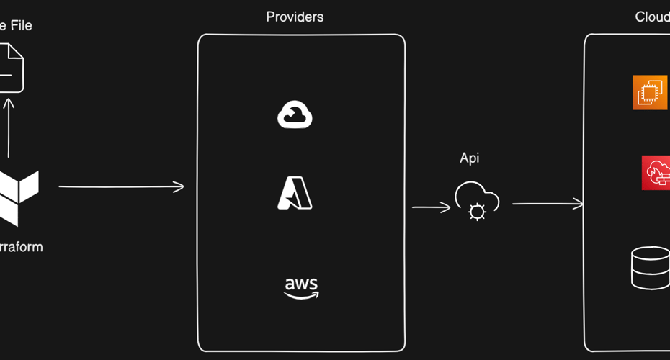Dev
20h
70

Image Credit: Dev
Unveiling the Magic: How Terraform Works Under the Hood to Manage Your Infrastructure as Code
- Terraform is an open-source infrastructure as code tool for deploying infrastructure using human-readable configuration files that can be versioned and shared.
- The key reasons for choosing Terraform include its multi-cloud support, declarative configuration, and robust community ecosystem.
- Terraform works by using providers as plugins to interact with cloud platforms or services, ensuring that the desired state of infrastructure is met.
- Providers like 'azurerm' for Azure, 'aws' for AWS, and 'google' for GCP facilitate resource management in their respective cloud environments.
- The Terraform workflow involves writing configuration files, initializing the project, planning changes, and applying those changes through API requests to cloud providers.
- Actions like 'terraform init' for setup, 'terraform plan' for generating execution plans, and 'terraform apply' for making changes are integral to Terraform's functionality.
- Terraform ensures idempotency, meaning repeated executions yield the same result unless there are changes in the configuration, which are then applied conservatively.
- The tool simplifies managing multi-cloud and hybrid infrastructure by abstracting cloud API complexities and maintaining infrastructure consistency.
- Overall, Terraform's structured approach to infrastructure provisioning, updating, and tracking ensures reliable and scalable management across different cloud environments.
Read Full Article
4 Likes
For uninterrupted reading, download the app